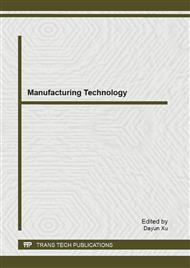p.75
p.80
p.84
p.89
p.93
p.99
p.106
p.110
p.114
Study on the Synthesis of LiCoO2 from Spent Li-Ion Batteries
Abstract:
A new LiCoO2 recovery technology from leaching solution of spent Li-ion batteries was studied in this paper. Leaching solution contained many metals, such as Cu, Co and Fe. Copper was removed through replacement by iron powder followed by iron precipitation in goethite method. The experimental results show that Cu can be removed 99% at least through replacement by Fe powder, and the removal of Fe can achieve 99% by goethite method. The optimum Cu removal conditions are that temperature is 50 °C, Femol/Cumol=1.5,reaction time is 30 min. The optimum Fe removal conditions are that terminal precipitation pH is 4, temperature is 90 °C, reaction time is 6 h. The remainder Co can be mixed with Li2CO3,LiOH•H2O and LiAc•2H2O to adjust the Li/Co molar ratio to 1.00. The new LiCoO2 was obtained by calcining the mixture at 850°C for 12 h in the air. Structure and morphology of the recycled powders and resulted sample were observed by XRD and SEM technique, respectively. The layered structure of the LiCoO2 synthesized by adding Li2CO3 is best, and it is found to have the best characteristics as cathode material in terms of charge–discharge capacity and cycling performance.
Info:
Periodical:
Pages:
93-98
Citation:
Online since:
December 2012
Authors:
Keywords:
Price:
Сopyright:
© 2013 Trans Tech Publications Ltd. All Rights Reserved
Share:
Citation:


